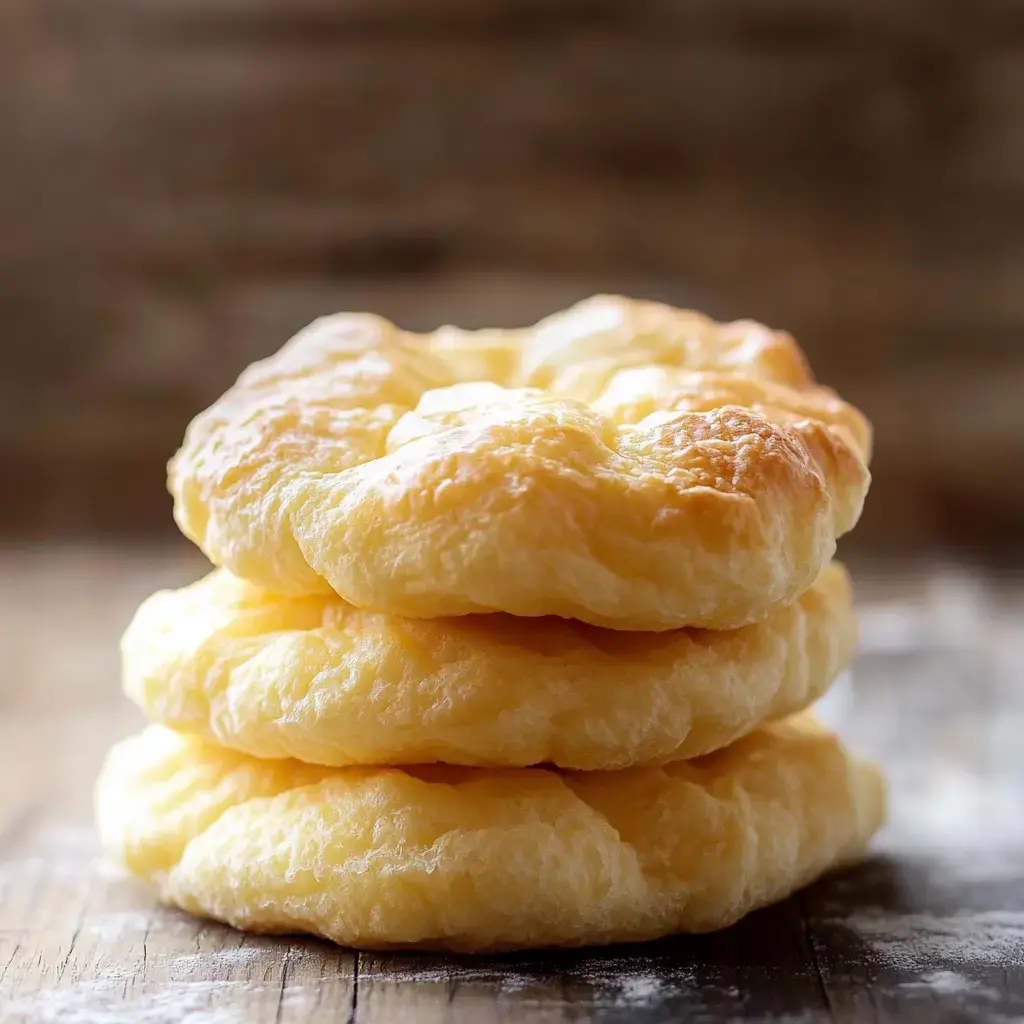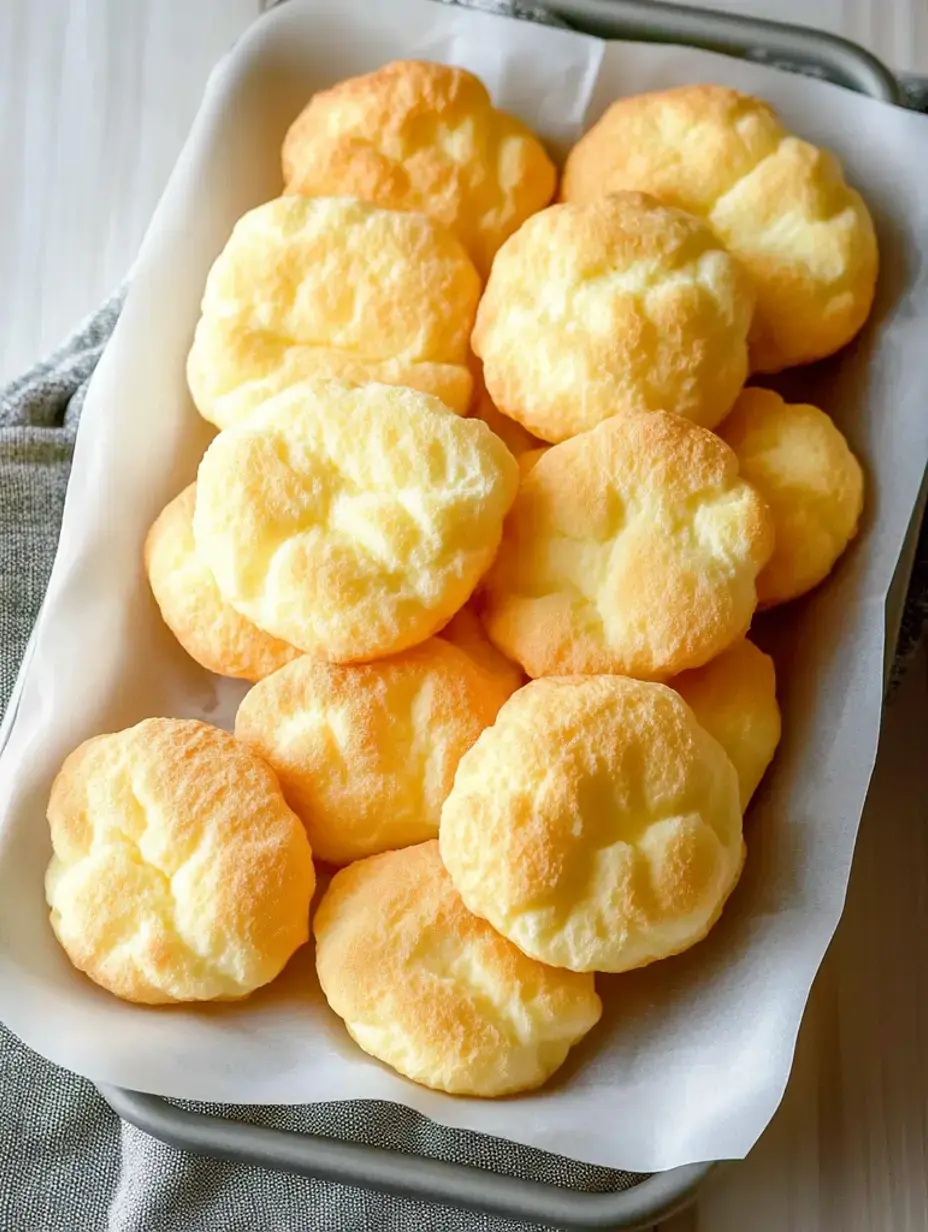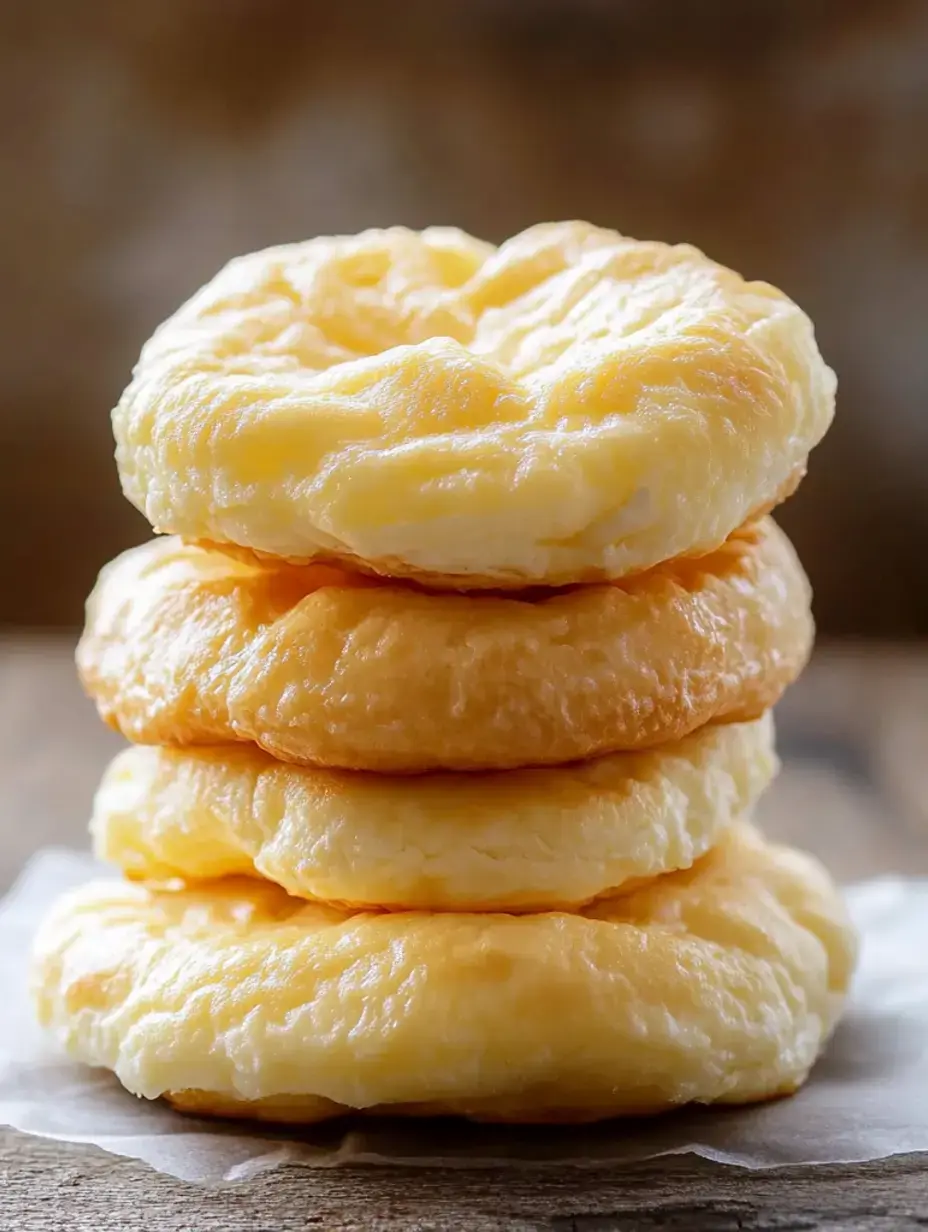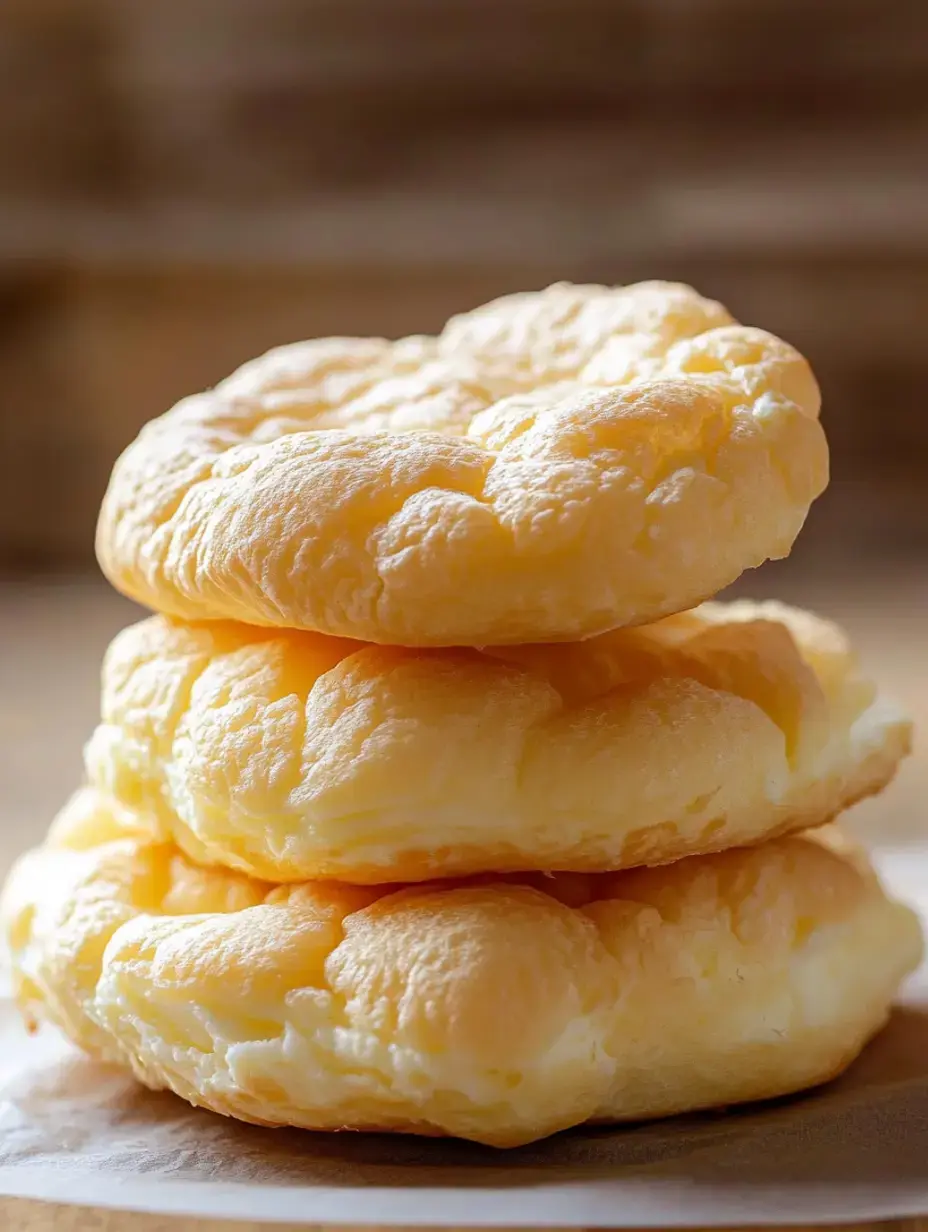 Pin it
Pin it
Cloud bread is a remarkable low-carb alternative made with just three basic ingredients. The result is a light, airy bread substitute that perfectly fills the gap when cutting back on traditional carbohydrates. Its simple preparation and versatile uses make it a practical addition to any kitchen.
Understanding Cloud Bread
The science behind cloud bread lies in the unique interaction between eggs and cream cheese, stabilized by cream of tartar. When properly prepared, these ingredients create delicate, bread-like rounds that work wonderfully as a substitute for traditional baked goods.
Essential Ingredients
- Eggs: Use room temperature eggs for optimal volume
- Cream Cheese: Full-fat cream cheese provides the best texture
- Cream of Tartar: Essential for stabilizing the egg whites
Basic Preparation
- Separate Eggs
- Carefully separate whites from yolks, ensuring no yolk contamination
- Prepare Base
- Blend softened cream cheese thoroughly with egg yolks
- Beat Whites
- Whip egg whites with cream of tartar until stiff peaks form
- Combine Mixtures
- Fold ingredients together gently to maintain volume
Baking Instructions
Form the mixture into uniform rounds on lined baking sheets. Bake at 300°F until golden brown, watching carefully as they rise and expand in the oven.
 Pin it
Pin it
Cooling Process
Cloud bread naturally deflates slightly while cooling. The texture transitions from souffle-like to a more bread-like consistency, making it ideal for various uses.
Serving Suggestions
Cloud bread serves multiple purposes in the kitchen. Use as sandwich bases, breakfast toast, or mini pizza crusts. They pair particularly well with both savory and sweet toppings.
Storage Methods
Store in an airtight container at room temperature for 2-3 days. For longer storage, freeze between sheets of parchment paper and reheat briefly before serving.
Technical Tips
Success depends on proper temperature control and technique. Use room temperature ingredients and take care when incorporating the whipped whites for optimal results.
Nutritional Benefits
Cloud bread fits perfectly into low-carbohydrate and ketogenic meal plans. High in protein and virtually carb-free, it provides a satisfying alternative to traditional breads.
 Pin it
Pin it
Using Cream of Tartar
Cream of tartar serves as a crucial stabilizing agent in cloud bread. This common baking ingredient helps maintain the structure of whipped egg whites throughout baking.
Appetizer Applications
Cloud bread makes an excellent base for hors d'oeuvres. Top with premium ingredients like smoked fish, fresh herbs, or specialty spreads for elegant appetizers.
Dietary Modifications
Dairy-free versions can be made using plant-based cream cheese alternatives. Select products with similar fat content and texture for comparable results.
Batch Preparation
Double batches work well for meal planning. Prepare multiple sets and freeze excess portions for convenient meal preparation throughout the week.
Family-Friendly Options
Adapt cloud bread for younger palates by incorporating mild seasonings or light sweeteners. Create different shapes and sizes to increase appeal for children.
 Pin it
Pin it
Caloric Considerations
Cloud bread provides a lighter alternative to traditional breads. Each portion contains minimal calories while offering substantial protein content.
Topping Variations
Experiment with different toppings and fillings. Cloud bread accommodates both savory and sweet additions, from fresh vegetables to lean proteins.
Flavor Variations
Incorporate dried herbs, spices, or seasonings into the base mixture. Common additions include garlic powder, herbs, or seed toppings before baking.
Kitchen Equipment
Standard kitchen tools suffice for cloud bread preparation. Essential items include mixing bowls, an electric mixer, baking sheets, and parchment paper.
Recipe Sharing
Cloud bread consistently impresses both experienced and novice bakers. Its adaptability allows for personal customization while maintaining the basic preparation method.
 Pin it
Pin it
Frequently Asked Questions
- → What's the deal with full-fat cream cheese?
Using full-fat cream cheese yields a sturdier, more consistent texture. Low-fat kinds can make the bread flimsier.
- → When do I know they're baked through?
They're ready when the tops crack, turn golden-brown, and peel off the parchment paper without sticking.
- → Can I freeze these breads?
Yep! Stack them with parchment paper in between, pop them in a freezer bag, and toast them straight from frozen.
- → Why use ingredients at room temperature?
Room-temperature cream cheese blends much better with egg yolks, giving you a smoother batter overall.
- → How long will they stay fresh?
You can leave them at room temperature for about three days, pop them in the fridge for up to a week, or freeze them if you want to store them longer.
